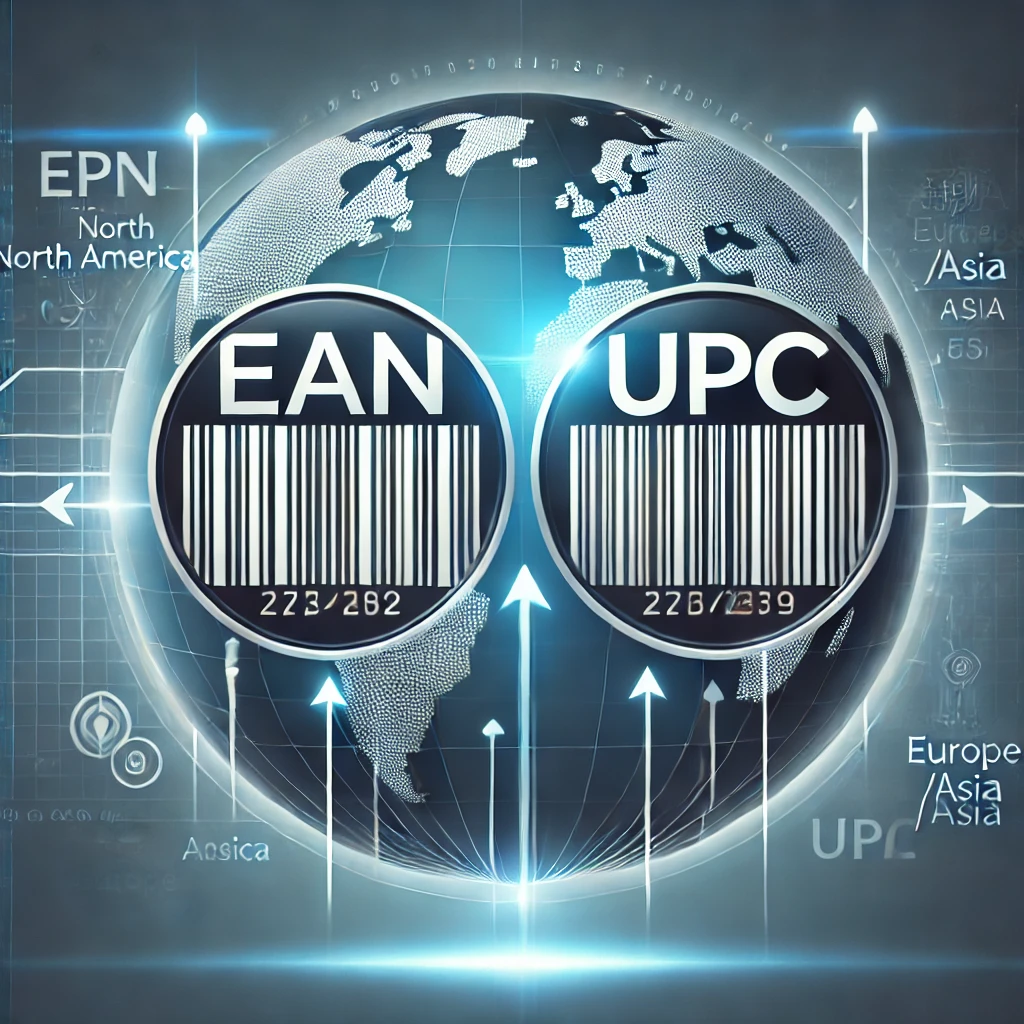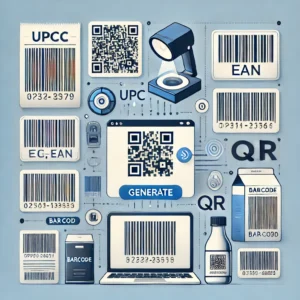
How to Create Barcode: Step-by-Step for Businesses
The development of barcodes is now a completely integrated part of modern business practices, helping businesses streamline operations, lessen errors,

This component has entered the world of global supply chains, allowing businesses to track their products more efficiently, indicate inventory levels, and promote sales. In respect to the two most used barcodes, the most widely used are EAN and UPC codes, which, despite similar purpose, might differ in some ways. The article will tell about the differences between these two types of barcode systems as well as what are the advantages and disadvantages of each type in order to help the businesses make decisions about which system is better in their case.
EAN code, popularly known as International Article Number in Europe and other global areas except North America, is a 13-digit code that consists of an EAN number for scanning barcodes on special products sold in any retail point. Being part of the GTIN system, the EAN barcode offers the all-inclusive view to be eligible at the global level.
Format 13 digits (12 digits plus check digit)
Geographic Region Used in Europe, Asia, among other regions
Function Allows further globalization of bar codes across the globe to standardize products
Compatibility Accepted by most retail systems in the world to easily conduct business across international borders .
The UPC, which stands for Universal Product Code, is the most common barcode type and mainly serves the United States and Canada. The UPC barcode consists of 12 numeric digits that represent products at a point of sale, and it is also a part of the GTIN system. Although the UPC primarily serves North America, systems around the world can scan it, making UPC barcodes ideal for both domestic and international markets.
Format: 12 digits (11 digits plus a checksum)
Country: Primarily used in the United States and Canada
Application: Suitable for barcoding within local retail and scannable in international markets.
Compatibility: Most scanning devices across the globe use this format; however, some countries using the EAN format may require conversion.
Universal Recognition: Receives universal recognition in the global market, hence more applicable in international trade.
More Digits: The 13-digit format allows for a greater number of product numbers which could be handy for firms with vast quantities of products.
Scanned by Universal POS systems: It can be scanned by the majority of universal POS systems.
Region-Specific: Though they are in use globally, UPC codes are less common in North America, which means that a business firm operating in this region would require some sort of integration or adjustment.
One Digit Larger Code: The additional digit also means that the barcode is slightly longer than the UPC; this may be inconvenient for packaging products, which occupy limited space.
Widespread use in North America: Suitable businesses making major sales of their products across the United States and Canada
Compact Design: The 12-digit format is relatively compact, best suited for products that have small packaging
Compatible with international market scanning: Although the UPC barcode is designed for internal use within North America, scanners abroad can still read it.
Fewer Identifications: The UPC system has fewer identification numbers for products since the barcode has 12 digits, while it might be a restriction on the larger business that sells thousands of products.
Less International Flexibility: Organizations that cater to international distribution may opt for the EAN system because this barcoding system offers broader international reach.
It depends on the type of product the company is trading, the target market, product range, and distribution targets. In a small case scenario, if your business mainly operates in North America, then UPC code appears to be the best option, but if your target audience is global, it seems that the EAN system is much more flexible and compatible.
This may be the best choice for companies that have both local and international customers. Most modern POS systems can read different types of barcodes, so you can choose the code that will be best accepted in the market where you sell your product.
EAN and UPC codes are useful to form the backbone of product identification in retail and supply chains around the world. However, although both EAN and UPC codes perform nearly the same functions, the two are surely different in numbers of digits, their usage across the regions, as well as scope and products traded under them. For a business, understanding the strengths and limitations of such systems can be quite fruitful when deciding on market strategies to ensure that transactions go through smoothly, with correct inventory management at a global level.

The development of barcodes is now a completely integrated part of modern business practices, helping businesses streamline operations, lessen errors,

Sarcodes are responsible for changing the inventory management skills within businesses, tracking products, and improving their operational efficiency. Whether you

Street No 5, Opp. Mohar Singh Hospital, Hisar Rd, Bus Stand Sirsa, Haryana
+919050073902
